Compiled by Savitha Hira
Photography: Courtesy the
architects
Read Time: 2 mins
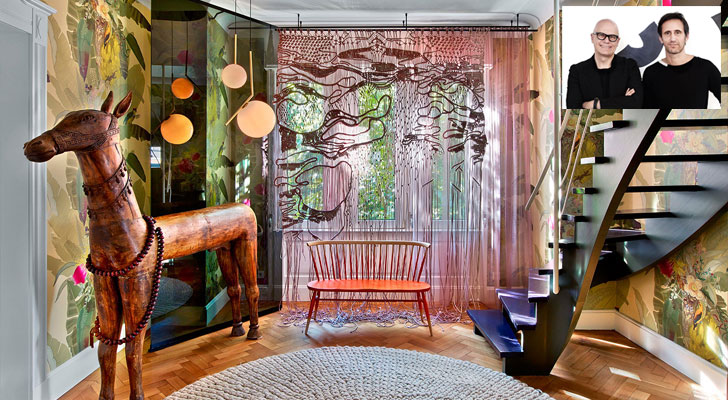 |
| . |
Ippolito Fleitz
group redesigns a home in Stuttgart, creating a strong graphic counterpart to
the typically bourgeois Wilhelminian architecture…
A listed
Wilhelminian building in a sought-after location on the edge of Stuttgart’s city
centre stretches over two floors with an unusual tapering floor plan that resembles
a slice of cake. The 290 sq. m. apartment is a brimming blend of styles - a
vibrant cabinet of curiosities, filled with
mementos and inspirational pieces, which they have collected or sourced on the
homeowner’s various travels.
 |
| . |
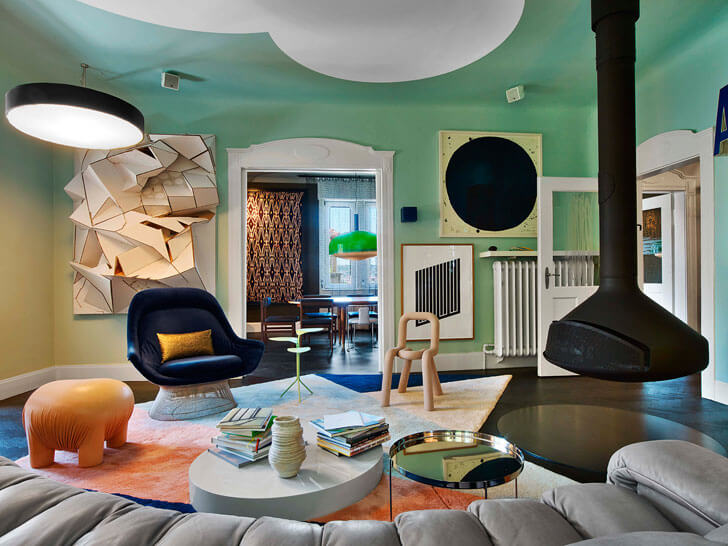 |
| . |
A characteristic
period feature of the building is its layout of individual rooms grouped around
a central hallway. This layout was carefully modified, respecting the
building’s listed status, to create a spacious, open discourse with shifting
vistas and overlapping perspectives.
The upbeat is
given by a pale grey, gallery-like hallway, at the head of which is the living
room – a salon-like space with strong contrasting colours, intense graphic
elements and large forms. The interesting layout has the salon and the dining
room connected at the far end by a by a small room with a bay window. The
entire interior vista comes alive juxtaposing the graphic character of one room
with the textile materiality of the other, as it merges in a specially-commissioned
psychedelic wallpaper, which challenges the eye and forms a provocative
backdrop to several colourful artworks.
And this is the mainstay of this vibrantly
unique apartment: a wooden bench from India, which draws you into the space, accentuating
the suction effect of the trapezoidal layout; a lemon-yellow bookcase
positioned against powder blue walls; a Moustache chair; Uzbek ikat cloth, Indian
silk embroideries, Laotian textile applications and African Losa basketwork, a
ceiling mural by Alix Waline, a life-size wooden horse - an archaic artefact from India…
the list is endless! And the memorabilia are bound together by
a black herringbone parquet floor that runs throughout the apartment, lending a
flowing feel and creating a strong design vocabulary against the typically conformist
Wilhelminian architecture.
The bedrooms are relegated
on the floor above, along with a private TV lounge, a spacious study, gym room
and library, and a generous terrace with a view of the treetops in the
neighbouring avenue. Multiple mirrored surfaces expand the space and create
optical bridges to the rooms by means of reflections. The soft atmosphere with
the salmon-coloured backdrop stands neutrally, paradoxically contrasted by dark
wood, leather, free-standing furniture commanding centre-space, even bold scintillating
contrasts that build a unique narrative – full of intrigue, layered with sensitivity
and sensuality.
The maisonette is
a museum of memories and a showroom for the creativity of its owners, in one. In
place of a closed, consistent aesthetic, the apartment functions as a collage
of variegated moods. Yet, despite their seeming disparity, a synthesis is
achieved that perfectly reflects the personality of the owners in the
individual rooms.

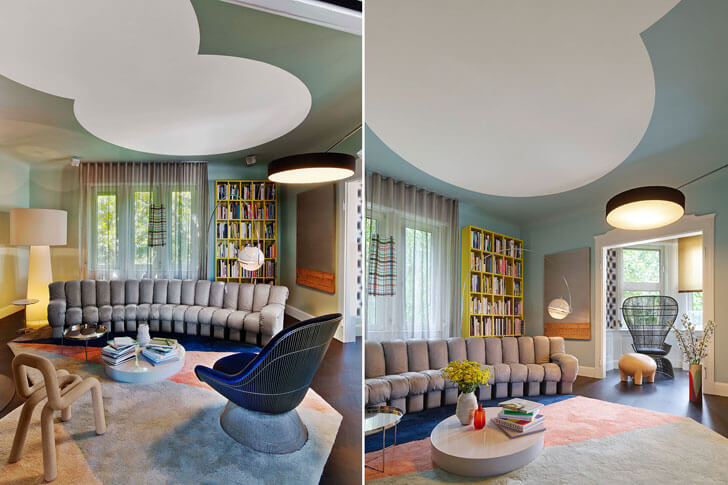
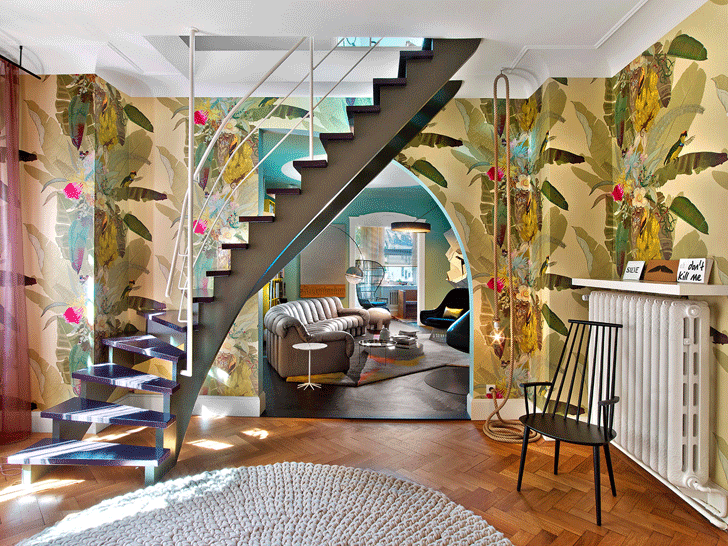
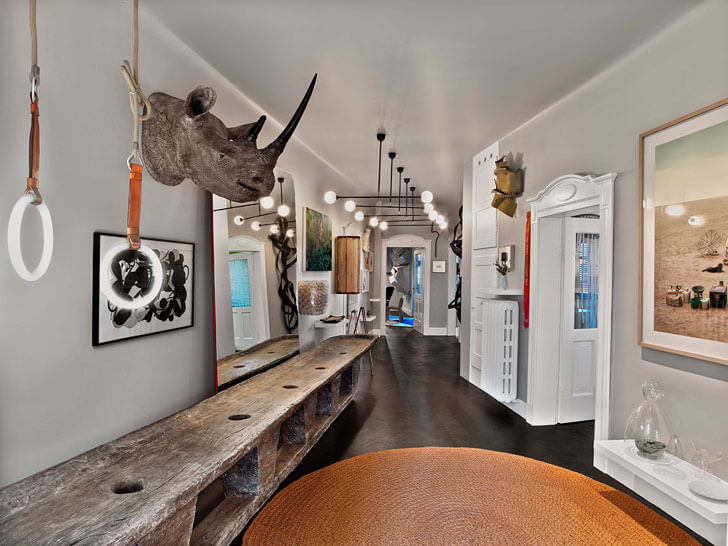
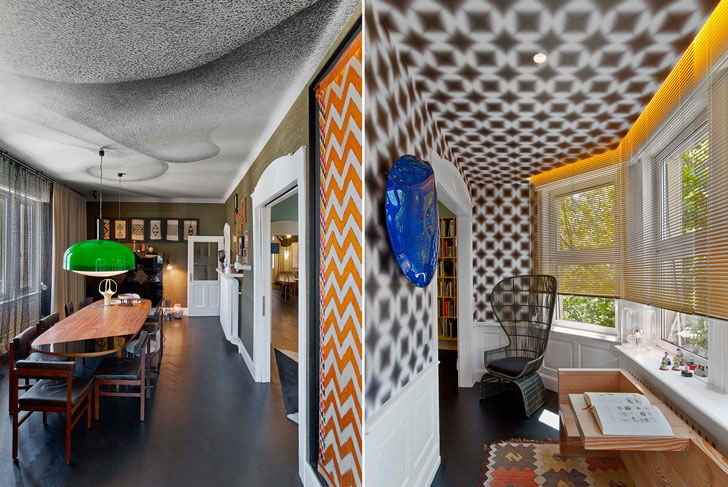
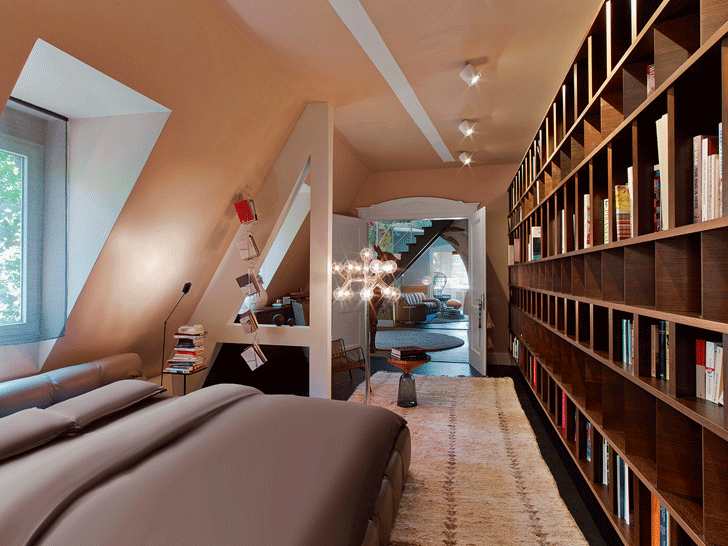
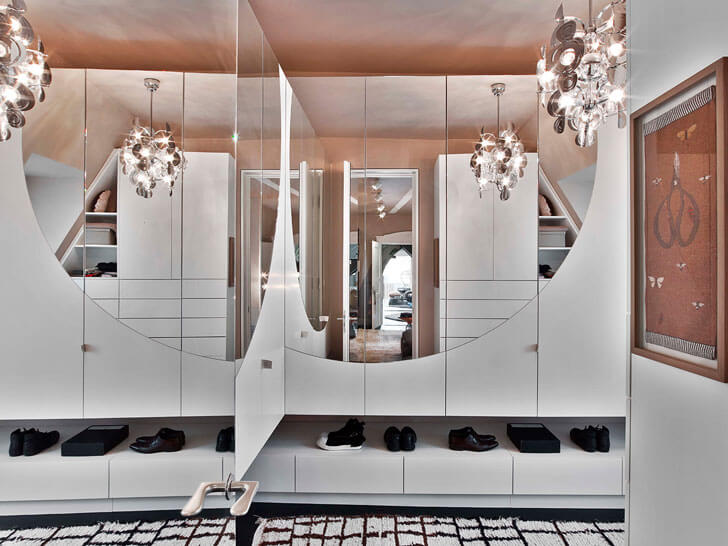

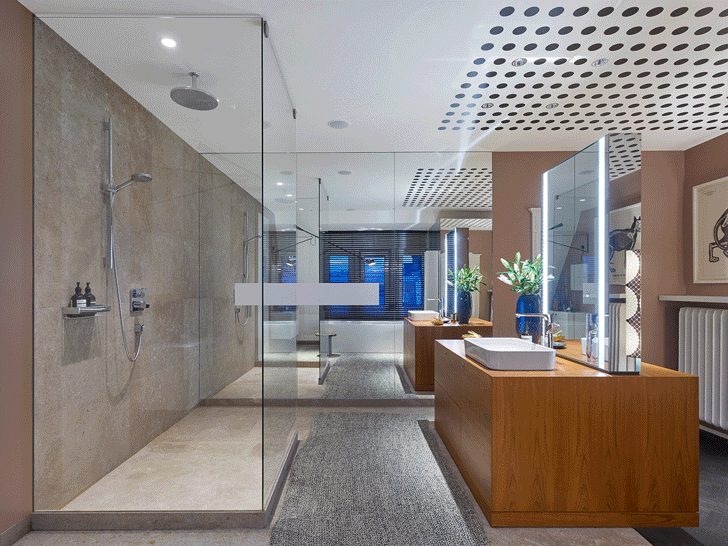
No comments :
Post a Comment